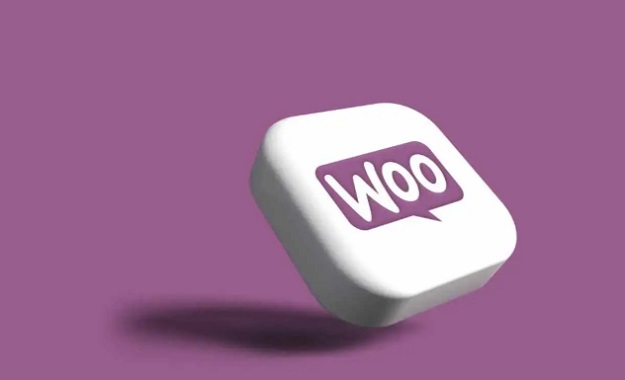Choosing a WooCommerce theme might seem like a simple design decision. It isn’t. For many online stores, it’s the quiet difference between a site that looks nice and a site that actually sells.
E-commerce is not just about product listings and payment gateways — it’s about trust, clarity, and speed. The theme you pick — and how you customize it — defines all three.

Design Is Not Decoration — It’s Strategy
Online buyers make decisions fast. They land on your homepage and instantly ask themselves: “Is this store legit?” “Can I trust this?” “Can I find what I need here?” You have seconds to answer — visually.
Outdated typography, cluttered product grids, inconsistent image sizes — they don’t just look unprofessional. They signal risk. Risk that a product won’t arrive. Risk that support will be unresponsive. Risk that the brand is a side hustle, not a real business.
On the flip side, a polished, intentional design builds instant confidence — often more effectively than long-form copy or guarantees. That’s why WooCommerce theme customization isn’t optional. It’s foundational.
Default Themes = Default Results
Many stores start with free themes or minimal customizations. It’s understandable — they’re quick to set up and don’t require a developer. But here’s the problem: default themes are built to be general-purpose, not conversion-optimized.
These themes often:
# Use one-size-fits-all layouts that don’t match your products or niche
# Have bloated code that slows page speed
# Prioritize flexibility over clarity, leading to confusing navigation
# Lack key eCommerce UI patterns like sticky add-to-cart buttons or trust badges
Your store shouldn’t look like a template. It should look like your brand. The more tailored the layout, color system, and UX flows — the more intuitive the buying experience becomes.
The Mobile UX Problem
Roughly 70% of e-commerce traffic now comes from mobile — but many WooCommerce themes are designed desktop-first. That’s a huge issue.
On mobile:
Navigation becomes compressed or hidden behind hamburger menus
# Product photos shrink or distort
# CTAs fall below the fold
# Popups block the entire viewport
Unless you’ve manually audited your store’s mobile flow, you’re probably leaking conversions from mobile users — not because your product is bad, but because the interface makes it hard to buy.
Customization Isn’t Just About Code — It’s About Intent
Design is not just pixels. It’s decisions. Which product gets featured first? What does the homepage banner say (and to whom)? Are filters easy to use? Does the cart button stay visible?
None of this comes from a theme out of the box. It comes from customization — ideally backed by testing, user feedback, and real conversion data.
A UX breakdown shared by Helix Solutions showed how one client doubled their mobile conversion rate by redesigning their product grid: switching from square thumbnails to taller images, adding quick-view buttons, and tightening the spacing reduced scroll fatigue and improved engagement.
This isn’t complex. It’s just thoughtful.
Visual Hierarchy = Conversion Hierarchy
In any interface, the eye follows a path. That path should lead users to key actions: view product → add to cart → checkout. But many WooCommerce stores have no visual hierarchy. Fonts are mismatched. CTAs don’t stand out. Cart icons get lost in the header.
Strong visual hierarchy does three things:
1. Focuses attention where it matters
2. Removes decision friction (what to do next is always obvious)
3. Builds emotional momentum (you feel guided, not confused)
Without it, users stall. And stalled users rarely convert.
Theme Speed Matters — A Lot
Your site might look great. But if it takes five seconds to load, no one will see it.
Heavy WooCommerce themes (especially those packed with animations, sliders, and unnecessary JS) can kill mobile performance. Even “lightweight” themes need fine-tuning:
# Disable unused features
# Replace bloated page builders with native blocks
# Compress assets and lazy-load media
# Use fonts sparingly
Don’t Copy — Translate
Many store owners pick a theme because “it looks like Apple” or “this demo is clean.” But copying design doesn’t copy performance.
Your store has its own voice, product mix, customer persona, and use case. A luxury jewelry store doesn’t need the same UI as a fast-fashion brand. A WooCommerce store selling digital downloads needs entirely different flows than one shipping physical products.
Great design translates business logic into experience. It turns your product into a narrative. A theme is just the canvas — your job is to paint.
Final Thoughts
Launching a WooCommerce store is easy. Building one that converts takes design thinking — not just plugins and pages.
If you’re serious about growth, your theme choice and customization strategy aren’t surface-level decisions. They shape how your brand is perceived, how your users behave, and ultimately, how your business performs.
Because in e-commerce, nobody buys from a store that just looks “fine.” They buy from a store that feels right — and that feeling is built through design.




